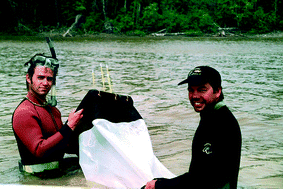Responses of two sentinel species (Hexagenia limbata—mayfly; Pyganodon grandis—bivalve) along spatial cadmium gradients in lakes and rivers in northwestern Québec
Abstract
Specimens of the mayfly larva Hexagenia limbata and of the floater mussel Pyganodon grandis were sampled in rivers and lakes contaminated by trace metals in the Abitibi-James Bay region in northwestern Québec.


 Please wait while we load your content...
Please wait while we load your content...